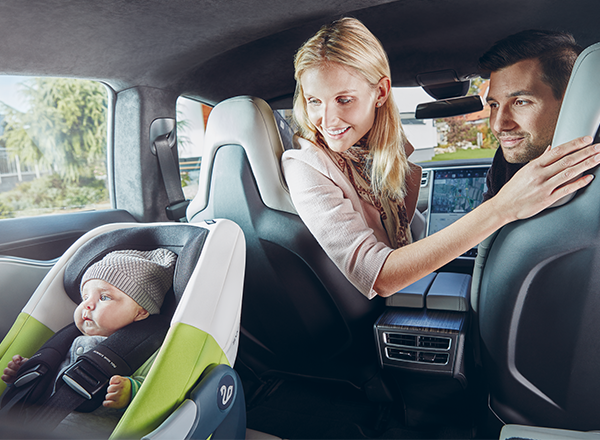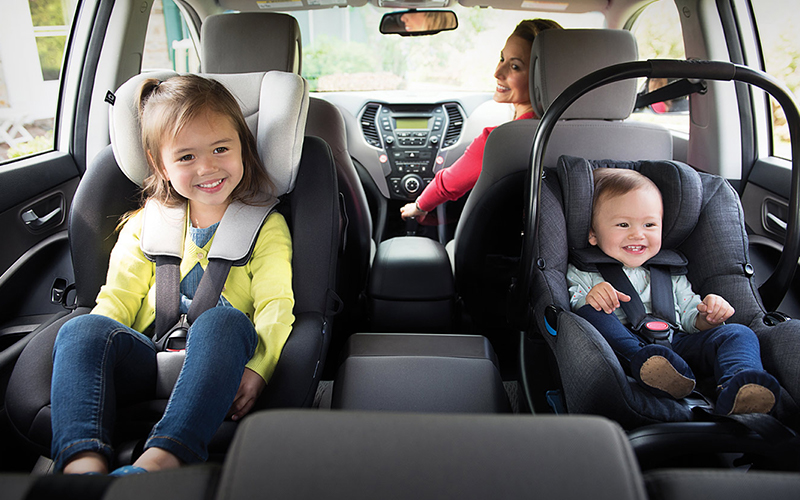Why Do Baby Car Seats Face Backwards
872008 By facing them backwards in a car seat the seat will cradle their head in an accident all the motion will be directed into the car sear instead of letting their little necks take the brunt of. There are laws in each Australian state and territory that regulate which car seat you need for your child from birth to 16 years CREP nda NRA and Kidsafe Australia 2013.
 Bbroken Legs Cast It Broken Neck Casket Rear Facing Until 40 Lbs And Or 1 In Below The Top Of The Seat Back Carseat Safety Rear Facing Car Seat Car Seats
Bbroken Legs Cast It Broken Neck Casket Rear Facing Until 40 Lbs And Or 1 In Below The Top Of The Seat Back Carseat Safety Rear Facing Car Seat Car Seats
There can be some confusion over which restraints are right for.

Why do baby car seats face backwards. 122018 In a front-end collision the driver snaps forward toward the point of impact and is hopefully restrained by a seatbelt while a rear-facing child falls backward right into the car seat. Always put your infant in a rear-facing child safety seat in the back of your car. Shes also too big for her seat if her head sticks out over the top of it.
This will keep her as safe as possible for as long as possible. 2092013 Most car seats on the market today will easily rear face even above average height and weight kids until 3-4 years of age. All parents want their children to be as safe as possible for as long as possible.
Your baby must be restrained in an approved rearward-facing child car seat such as an infant capsule or a convertible car seat specially designed for babies. If you have a smaller rearward-facing seat or capsule you may want to consider buying a larger rearward-facing restraint before moving your child to a forward-facing restraint. What car seat does my child need.
Car seat research has shown that children up to 23 months old are about 75 percent less likely to die or sustain serious injury in a rear-facing car seat than a. Since most crashes occur this way keeping your kid in a rear-facing car seat stacks the deck in your favor. Traditionally theyve happened around the same time Babys first birthday but on Monday the American Academy of Pediatrics AAP officially revised its recommendations regarding buckling up babies.
Deciding when your baby can face forward in the car is a big step and you should do it carefully. To ensure the safest travel experience possible you should keep your child in. Rearward-facing Baby Seats Babies and infants need to be carried in rearward-facing baby seats.
This reduces the risk of death or injury in a crash by 90 compared with being unrestrained. The shoulder straps must be at or below your babys shoulders. Rearward-facing seats provide greater protection for the.
Deaths and serious injuries to these children are extremely. In a sudden violent stop a rear-facing seat will cradle a childs entire back and spread out the force of the crash reducing the risk of serious injuries to the neck and spine. Why Extended Rear Facing Seats Are The Safer Option.
Sweden where children are kept in rear-facing seats until the age of 4 has the lowest highway death. 842021 This will provide extra protection as that is the safest spot in the vehicle. Child safety seats have several pairs of harness slots so you can adjust the harness as your baby grows.
The Risk of Broken Legs. 2332011 A rear-facing seat better protects the head neck and spine of infants and toddlers in a crash. 3062020 The fact that the rear-facing child has a place to put their feetagainst the back of the vehicle seatmeans that their legs are supported and they dont experience this discomfort.
Up to six months. 3042019 A rear-facing car seat will absorb most of the crash forces and supports the head neck and spine. 632020 All of these factors increase the risk of a spine injury in a crash.
Children in other countries routinely ride rear-facing until age 4. When children ride forward-facing their heads - which for toddlers are disproportionately large and heavy - are thrown forward possibly resulting in. That especially extends to car travel where child restraints are vital to ensure children are safely protected in the advent of a road incident.
A baby riding in the front seat can be fatally injured by a passenger side air bag. 2912020 The AAP now suggests that children remain rear facing until they reach their rear-facing car seats weightheight limits which for most children will leave them rear-facing beyond the previous. Without a CT scan there is no way to know what stage of development your childs spinal column is in so the safest option is to rear face to the maximum weight or height of a convertible car seat.
2132011 In the pantheon of child development many parents consider the act of turning the car seat from rear-facing to forward-facing right up there with the first step.
 Car Seat Safety Guide Parenting
Car Seat Safety Guide Parenting
 Why Are Rear Facing Child Car Seats Safer Swandoo
Why Are Rear Facing Child Car Seats Safer Swandoo
 Educational Graphics Rear Facing Car Seat Child Passenger Safety Carseat Safety
Educational Graphics Rear Facing Car Seat Child Passenger Safety Carseat Safety
 When Can I Turn My Baby Around To Face Forward In The Car Safewise
When Can I Turn My Baby Around To Face Forward In The Car Safewise